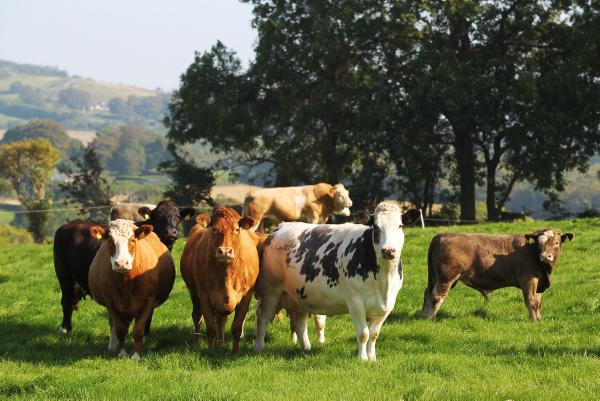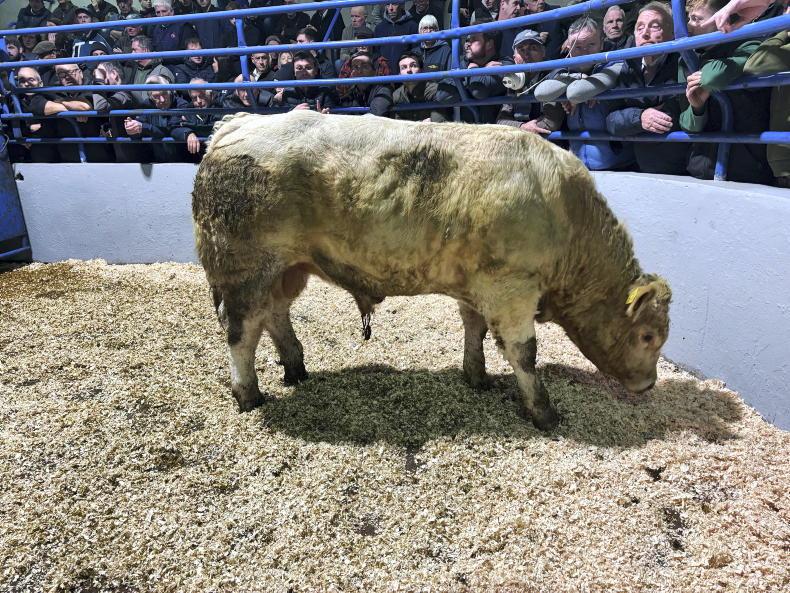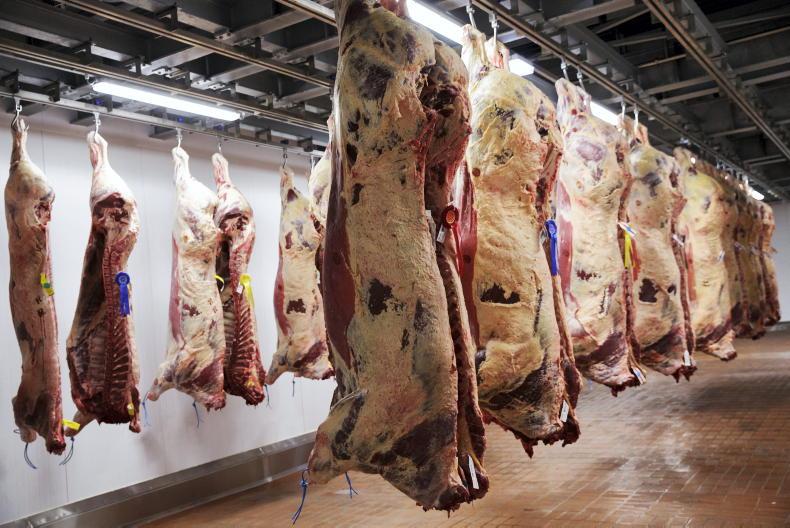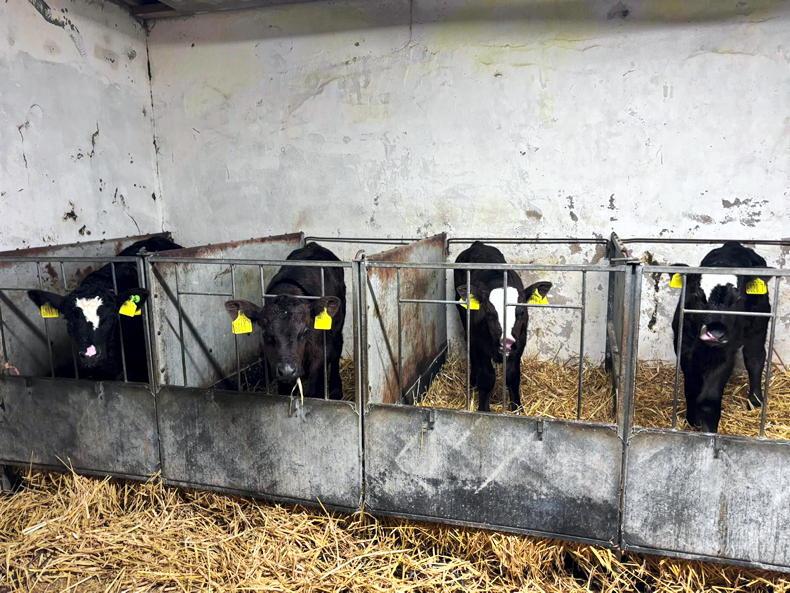Almost 600 farmers attended the National Beef Conference in Athlone last week. Profitability of suckling took centre stage at this year’s event. The main theme focused on increasing farm efficiency through “improving the breeding and feeding of suckler cows”.
While market price and input cost undoubtedly have a major bearing on the profitability of suckler systems, the sale price alone will not make suckling profitable. It will be a combination of sale price and on-farm efficiency. Indeed, on-farm efficiency has to be tackled. The latest breeding statistics for Irish suckler herds would bear testament to this, indicating that advice on best practice is still not being followed by a large number of suckler farmers.
Despite the sector’s profitability challenges, intensified further by market conditions of the preceding 12 months, the mood among producers on the night was positive, with a noticeably strong appetite for new technical knowledge.
Suckling profitability
Suckling profitability is a balancing act. Farmers have to monitor and reduce cow cost, while maximising output per cow. Cow cost revolves around feed cost (75% of the overall cost), particularly winter feed and exploiting the full potential of grass in the system.
Teagasc beef researcher Paul Crosson said that profitability is greatest in suckler systems where the calving date is aligned with the start of the grazing season. He pointed out that where there is a long grazing season of 240 days, a net margin of €454/ha and €374/ha can be achieved for well-run calf-to-beef and calf-to-weaning operations.
In terms of feed cost savings, Paul acknowledged that it is difficult to reduce costs dramatically. Feed saving approaches include a number of options like shortening the indoor period through extended grazing or early turnout (€1.11/day/head feed saving), along with utilising cow body condition reserves.
Apart from reducing input costs, increasing output per cow is also a way of diluting production costs.
Figures 1 and 2 shows the effect of calving date and grazing season length on the profitability of suckler calf-to-weanling systems. In a new piece of analysis, February calving was identified as the most profitable calving date for calf-to-weaning systems, balancing high output (heavy weanlings: 335kg) and cost efficiency (calving close to turnout with a high proportion of grass in the diet). April- and May-calving was the least profitable for weaning producers, reducing the net margin to between €170/ha and €270/ha.
Nationally, one third of beef calving takes place during these two months. As for autumn-calving (September), the advice was that it is comparable in profitability to spring-calving only when farmers plan on selling stock early as weanlings or as part of a 16-month bull finishing operation.
Paul highlighted that the suckler herd is a “€1bn asset” and needs industry support and commitment to be maintained.
Equally, he stressed that improvements in cost efficiency are needed at farm level to sustain this as a viable asset.
He advised farmers that most of the improvement gains can be achieved on the output side (improvements in herd fertility, maximising calves per cow bred, breeding high-quality animals and achieving high liveweight gains from grass), which is essential to dilute the cow cost.
Paul used the example of the current national suckler fertility statistic (0.79 calves/cow/year and a 412-day calving interval), suggesting that a weaning price of €2.65/kg would be required to cover the production costs associated with this poor performance.
Alternatively, herds that operate at a high level of performance would need a weaning price of €2/kg (breakeven) to cover production costs. This clearly emphasises that sale price is one side of the equation but on-farm technical efficiency has an equally important role to play in farm profitability.
At the National Beef Conference in Athlone, Teagasc beef fertility researcher David Kenny told farmers that the most important performance measure in sucklers is the “calf output produced annually from each cow that is mated”. He said there is clear evidence of a “decline in reproductive performance of the Irish beef cow herd” and identified suboptimal management practices and selection on terminal traits as the main culprits. To improve fertility in suckler herds, targets must be set. Three key fertility milestones that must be achieved in a timely fashion are:
Early onset of puberty and breeding of replacement heifer.Resumption of cycling post-calving.Breeding and establishment of pregnancy. With regards to the beef genomic selection programme, David said that once in operation it “should accelerate the rate of genetic gain for improved reproductive traits”.
Longford suckler farmer John Kelly outlined to delegates his impressive fertility performance, producing 0.96 live calves per cow per year compared with the national average of 0.79. He said: “This means that if I calve 100 cows, I will have 96 live calves to sell versus 79 calves. This is a difference of 17 weanlings to sell each year, which at an average value of €850 per weanling is equal to €14,450.”
Bucking the trend, John plans to expand his suckler herd from 90 to 120 autumn-calving cows over the coming two years. Key to this is the new replacement index, which he feels is a useful decision-making tool for farmers to base sound breeding decisions on.
Calving at 24 months of age has the potential to increase herd output and lifetime performance of the cow.
Margaret Lehane, a prominent suckler farmer from Co Cork, gave a comprehensive breakdown of the management practices she has implemented to consistently calve all of her replacement heifers at 24 months of age.
She said: “Calving heifers at two years of age requires dedication but, like everything in life, putting in the extra effort gives you great rewards.”
Four key factors are required from the farmer to successfully calve heifers at two years:
Interest.Enthusiasm. Patience.Dedication.From a financial viewpoint, she said: “There is a strong advantage to calving heifers at two years of age. Looking at my own profit monitor last year, I achieved a gross margin of €1,056/ha. I had 73 cows calving and had 72 sales with an average value of €1,647.
‘‘If I calved my heifers at three years of age instead of two years, I would only be able to carry 65 cows, which would mean a loss of output worth €13,176.”
Dr Paul Crossan, Teagasc: “Generate as much of your output as possible from grass. Regardless of market price, technical performance on suckler farms needs to improve.”Paul Mooney, Trouw Nutrition: “Supplement suckler cows with a high quality pre-calving mineral six weeks before calving and 60 to 80 days after.’’ Margaret Lehane: “To consistently calve at two years of age, create the feelgood factor in your heifers. In a thriving heifer, we never have a problem detecting heat.”Professor Gerry Boyle, Teagasc director: “A cow’s genetics and managing her correctly are the key components necessary for profitable suckling.”
Almost 600 farmers attended the National Beef Conference in Athlone last week. Profitability of suckling took centre stage at this year’s event. The main theme focused on increasing farm efficiency through “improving the breeding and feeding of suckler cows”.
While market price and input cost undoubtedly have a major bearing on the profitability of suckler systems, the sale price alone will not make suckling profitable. It will be a combination of sale price and on-farm efficiency. Indeed, on-farm efficiency has to be tackled. The latest breeding statistics for Irish suckler herds would bear testament to this, indicating that advice on best practice is still not being followed by a large number of suckler farmers.
Despite the sector’s profitability challenges, intensified further by market conditions of the preceding 12 months, the mood among producers on the night was positive, with a noticeably strong appetite for new technical knowledge.
Suckling profitability
Suckling profitability is a balancing act. Farmers have to monitor and reduce cow cost, while maximising output per cow. Cow cost revolves around feed cost (75% of the overall cost), particularly winter feed and exploiting the full potential of grass in the system.
Teagasc beef researcher Paul Crosson said that profitability is greatest in suckler systems where the calving date is aligned with the start of the grazing season. He pointed out that where there is a long grazing season of 240 days, a net margin of €454/ha and €374/ha can be achieved for well-run calf-to-beef and calf-to-weaning operations.
In terms of feed cost savings, Paul acknowledged that it is difficult to reduce costs dramatically. Feed saving approaches include a number of options like shortening the indoor period through extended grazing or early turnout (€1.11/day/head feed saving), along with utilising cow body condition reserves.
Apart from reducing input costs, increasing output per cow is also a way of diluting production costs.
Figures 1 and 2 shows the effect of calving date and grazing season length on the profitability of suckler calf-to-weanling systems. In a new piece of analysis, February calving was identified as the most profitable calving date for calf-to-weaning systems, balancing high output (heavy weanlings: 335kg) and cost efficiency (calving close to turnout with a high proportion of grass in the diet). April- and May-calving was the least profitable for weaning producers, reducing the net margin to between €170/ha and €270/ha.
Nationally, one third of beef calving takes place during these two months. As for autumn-calving (September), the advice was that it is comparable in profitability to spring-calving only when farmers plan on selling stock early as weanlings or as part of a 16-month bull finishing operation.
Paul highlighted that the suckler herd is a “€1bn asset” and needs industry support and commitment to be maintained.
Equally, he stressed that improvements in cost efficiency are needed at farm level to sustain this as a viable asset.
He advised farmers that most of the improvement gains can be achieved on the output side (improvements in herd fertility, maximising calves per cow bred, breeding high-quality animals and achieving high liveweight gains from grass), which is essential to dilute the cow cost.
Paul used the example of the current national suckler fertility statistic (0.79 calves/cow/year and a 412-day calving interval), suggesting that a weaning price of €2.65/kg would be required to cover the production costs associated with this poor performance.
Alternatively, herds that operate at a high level of performance would need a weaning price of €2/kg (breakeven) to cover production costs. This clearly emphasises that sale price is one side of the equation but on-farm technical efficiency has an equally important role to play in farm profitability.
At the National Beef Conference in Athlone, Teagasc beef fertility researcher David Kenny told farmers that the most important performance measure in sucklers is the “calf output produced annually from each cow that is mated”. He said there is clear evidence of a “decline in reproductive performance of the Irish beef cow herd” and identified suboptimal management practices and selection on terminal traits as the main culprits. To improve fertility in suckler herds, targets must be set. Three key fertility milestones that must be achieved in a timely fashion are:
Early onset of puberty and breeding of replacement heifer.Resumption of cycling post-calving.Breeding and establishment of pregnancy. With regards to the beef genomic selection programme, David said that once in operation it “should accelerate the rate of genetic gain for improved reproductive traits”.
Longford suckler farmer John Kelly outlined to delegates his impressive fertility performance, producing 0.96 live calves per cow per year compared with the national average of 0.79. He said: “This means that if I calve 100 cows, I will have 96 live calves to sell versus 79 calves. This is a difference of 17 weanlings to sell each year, which at an average value of €850 per weanling is equal to €14,450.”
Bucking the trend, John plans to expand his suckler herd from 90 to 120 autumn-calving cows over the coming two years. Key to this is the new replacement index, which he feels is a useful decision-making tool for farmers to base sound breeding decisions on.
Calving at 24 months of age has the potential to increase herd output and lifetime performance of the cow.
Margaret Lehane, a prominent suckler farmer from Co Cork, gave a comprehensive breakdown of the management practices she has implemented to consistently calve all of her replacement heifers at 24 months of age.
She said: “Calving heifers at two years of age requires dedication but, like everything in life, putting in the extra effort gives you great rewards.”
Four key factors are required from the farmer to successfully calve heifers at two years:
Interest.Enthusiasm. Patience.Dedication.From a financial viewpoint, she said: “There is a strong advantage to calving heifers at two years of age. Looking at my own profit monitor last year, I achieved a gross margin of €1,056/ha. I had 73 cows calving and had 72 sales with an average value of €1,647.
‘‘If I calved my heifers at three years of age instead of two years, I would only be able to carry 65 cows, which would mean a loss of output worth €13,176.”
Dr Paul Crossan, Teagasc: “Generate as much of your output as possible from grass. Regardless of market price, technical performance on suckler farms needs to improve.”Paul Mooney, Trouw Nutrition: “Supplement suckler cows with a high quality pre-calving mineral six weeks before calving and 60 to 80 days after.’’ Margaret Lehane: “To consistently calve at two years of age, create the feelgood factor in your heifers. In a thriving heifer, we never have a problem detecting heat.”Professor Gerry Boyle, Teagasc director: “A cow’s genetics and managing her correctly are the key components necessary for profitable suckling.” 









SHARING OPTIONS